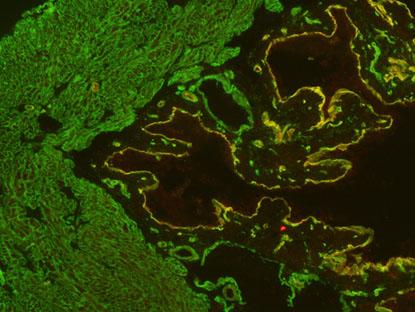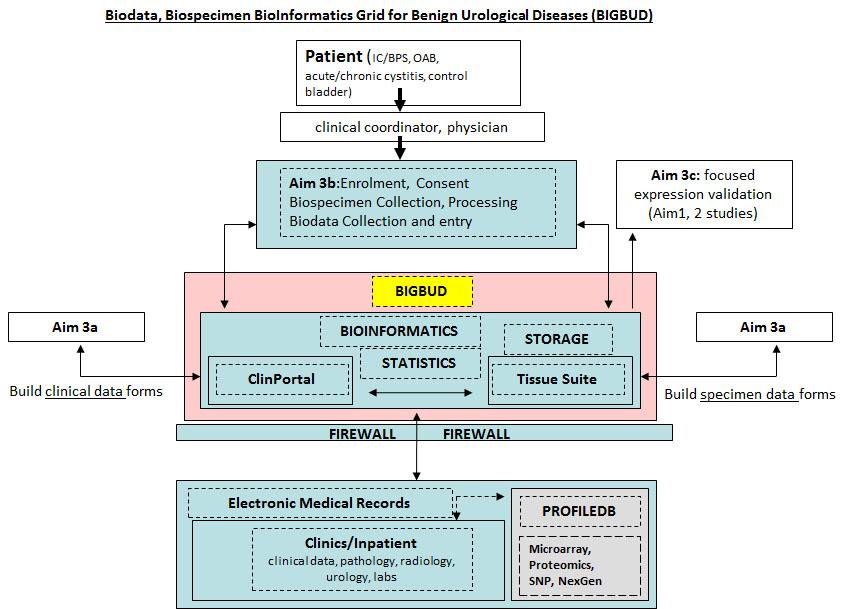The scientific research project has three aims designed to define cellular, molecular, and neurobiological changes that accompany various bladder injury models in mice and then correlate these with changes that occur in benign human bladder diseases. This process will also lead to the establishment of much needed infrastructure to conduct multifaceted research in bladder diseases (from bench to bedside).
Aim 1 (Mysorekar and Miner): To characterize the effects of various bladder injuries (uropathogenic E. coli, lipopolysaccharide, protamine sulfate) on urothelium using cellular approaches (urine cytology, tissue histopathology) and molecular approaches (qRT-PCR, Bioplex assays, microarray analysis).

Aim 2 (Gereau and Lai): To test the hypothesis that differing types of injury to the urothelium lead to distinct alterations in bladder neuroanatomy, bladder function (micturition), and bladder pain (nociception).

Aim 3 (Jain and Lai). To enroll a limited cohort of patients with benign bladder diseases (with age- and gender-matched controls), systematically annotate relevant clinical information through informatics, store the collected biospecimens and make these available for validation, discovery, structure-function and mechanistic studies. The core may perform limited validation and implementation of new high throughput technologies including Bioplex assays, immunohistochemistry, genomics and metabolomics and correlate results with observations from animal studies carried out in Aims 1 and 2.
Patients or volunteers interested in participating in studies of benign urological diseases are requested to contact Dr. Jain at jains@dom.wustl.edu or at 314-454-8728.
